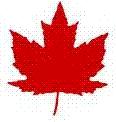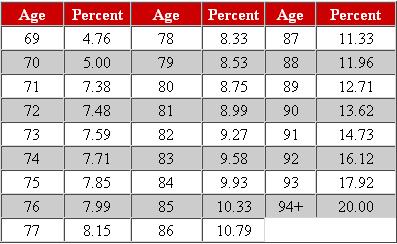

RRSP WithdrawalsRRSP Withdrawals are typically made when an individual retires and needs income from personal savings. When this is the case the RRSP would be converted into a RRIF (Registered Retirement Income Fund) and income would drawn from the new RRIF account. Of course you can always make RRSP Withdrawals without converting to a RRIF, but I have given some reasons not to do that below. Why are RRSP's converted to RRIF's? By law, a RRSP has to be converted to a RRIF by the end of the year in which the plan holder turns 71. RRIF's have set minimum withdrawal amounts that have to be taken, a percentage of plan balances, this percentage increases with age of the plan holder. A full schedule is below.  But, you don't have to wait until your 71 to start withdrawing money. A RRIF can be set up at any age, but there will still be minimum amounts that must be withdrawn. If you are wondering why not just make a RRSP withdrawal instead of converting to a RRIF. If you want money from a plan but are not yet 71 and do not have to convert, consider the following:

Tax Tip
There are two plans that will allow RRSP plan holders to make withdrawals without withholding tax and without the amount being immediately in taxable income. The are the First Time Home buyers Plan (HBP) and the Lifelong Learning Plan (LLP). The HBP allows first time home buyers to take a maximum $20,000 from their RRSP to use towards their home purchase. This money have to be re payed over 15 years. On Schedule 7, near the bottom, there is a box to designate any portion of RRSP contributions to the HBP (and/or LLP) repayment. If you have made RRSP contributions through the year that contribution will simply be reduced the the allocated payment amount. The LLP allows full time students to withdraw up to $20,000 to use towards education costs. The student must be full time (there are special rules for disabled students) at a qualifying educational program. Much like the LLP, this money has to be repaid over 10 years, and again schedule 1 is used to allocate repayment. Click here to go to the Canada income tax forms page and find LLP and HBP forms and documentation Click here to leave the RRSP Withdrawals page and return to the home page, where more important tax and accounting information can be found. . |